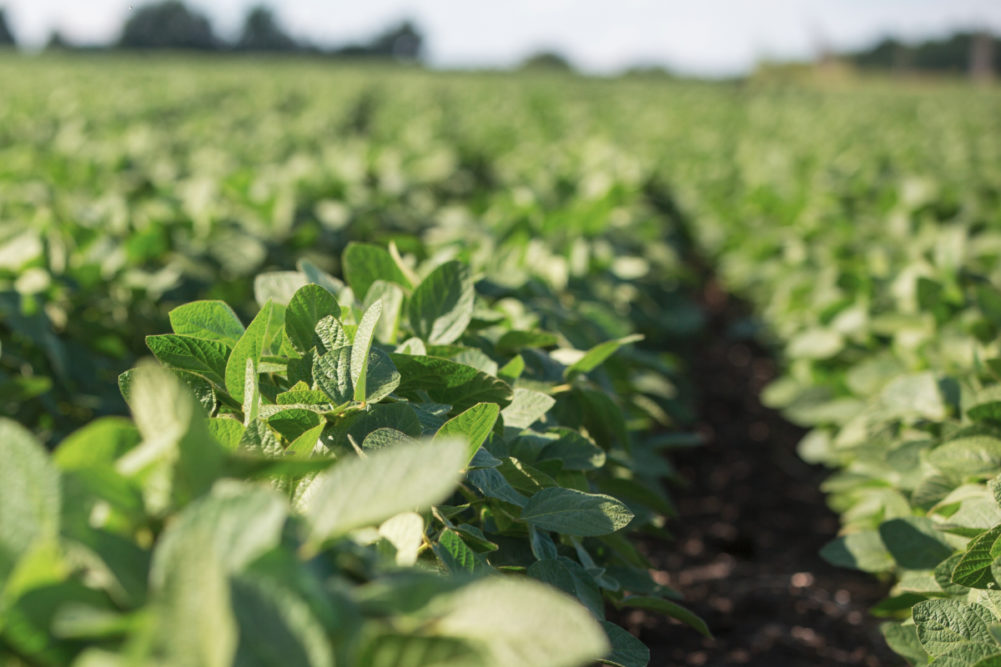WASHINGTON, DC, US —The latest government estimates of US areas planted to wheat, corn and soybeans contained few surprises but highlighted factors to watch for buyers of flour and other ingredients.
The US Department of Agriculture (USDA) in its annual Acreage report on June 30 estimated the area planted to spring wheat other than durum at 11.11 million acres, down 2.7% from 2021. The estimate was within the range of analysts’ pre-report expectations, but above the average expectation of 10.844 million acres. The estimate included hard red spring wheat at 10.4 million acres.
“The fact that that acreage number held together through all the talk about some chunk of that going into prevent-plant because of the late start we got due to wet conditions was important,” said Brian Harris, executive director and owner, Global Risk Management. “With that, we’ve seen a pretty dramatic improvement in weather conditions for the spring wheat, both in the US and Canada. That has been the primary contributor to the weakness in the Minneapolis market compared to KC and Chicago on this break. Minneapolis has been the downside leader since the report, and a lot of that probably had to do with that number.”
Wheat futures on all three exchanges have dropped more than 30% since posting highs on May 17.
The June 30 report estimated 1.976 million acres were planted to durum, up 3.1% from the March 31 Prospective Plantings forecast and up 20% from 2021. Trade estimates averaged 1.839 million acres. Winter wheat planted area, estimated by the USDA at 34.006 million acres in the June 30 report, were down 0.7% from March 31, up 1% from 2021, and below the range of pre-report expectations.
For the flour buyer, the acreage report is less critical to price direction than other factors, said Steve Freed, vice president of research at ADM Investor Services.
“The formula for a bottom in commodities is still a lower US dollar, higher and more sustained Chinese demand and copper prices and a more dovish Federal Reserve,” he said. “Some feel the next US Consumer Price Index data could begin to show lower inflation and by the fall, the year-over-year inflation increase could drop to 1%. Some feel that funds are not interested in buying grains until the shark, a recession, is out of the water.”
Spring wheat prices may have touched their lows already, Harris said.
“Keep in mind, even with some rebound in spring wheat this year, winter wheat stocks are still going to be at multi-year lows, so the wheat complex as a whole is still going to be skating on relatively thin ice,” he said. “We’re going to need big winter wheat acres again this fall, in addition to a successful spring crop this year. So best case scenario for a buyer is to look for something around $8.50 to $8.60 on December Minneapolis wheat as a target zone for purchase.”
Adding pressure to wheat futures was data from Statistics Canada that showed 2022 Canadian all wheat planted area at 25.395 million acres, up 9% from 2021 and the highest in nine years. The total included 18.212 million acres of spring wheat other than durum, up 10.5%, 6.006 million acres of durum, up 9%, and 1.177 million acres of winter wheat, down 13%.
The USDA on June 30 also estimated 2022 soybean planted area at 88.325 million acres, up 1% from 87.195 million acres in 2021, but down sharply from the 91.955 million acres forecast in the USDA’s March 31 Prospective Plantings report and below 90.446 million acres as the average of pre-report trade estimates.
“It amplifies the need for perfect growing weather,” Harris said. “If you take that new acreage number and lower the yield that USDA currently has plugged in by a half-bushel or more, you suddenly find yourself with a new crop ending stocks number below 100 million bushels, which is extremely tight. We’ve seen it before, but not very often, and it certainly keeps risk premium in market prices. We need to keep a close eye on that through the balance of summer, especially during the critical pod-set for soybeans during middle of August this year.”
The USDA estimated the area planted to corn for harvest this year at 89.921 million acres, down 4% from 93.357 million acres in 2021 but above both the average of trade expectations and the 89.490 million acres forecast in the USDA’s March 31 Prospective Plantings report.
“If we can get through pollination over these next three weeks unscathed as we move through July, I would expect December corn prices to move back toward that $5.25 to $5.50 level,” Harris said. “On soybeans, ending stocks will still be tight, which could still allow a market to slip back toward $12.50 to $12.75 as a resting zone, without any issues.”
The USDA noted that due to still-unplanted area when data were collected between May 28 and June 16 for the Acreage report, it would collect updated data for 2022 planted area for durum, other spring wheat, corn, soybeans, oats, barley, canola, dry edible beans, sorghum and sunflowers in the states of Minnesota, North Dakota and South Dakota. If changes are justified, updated acreage estimates will be provided in the Aug. 12 Crop Production report, the USDA said.




